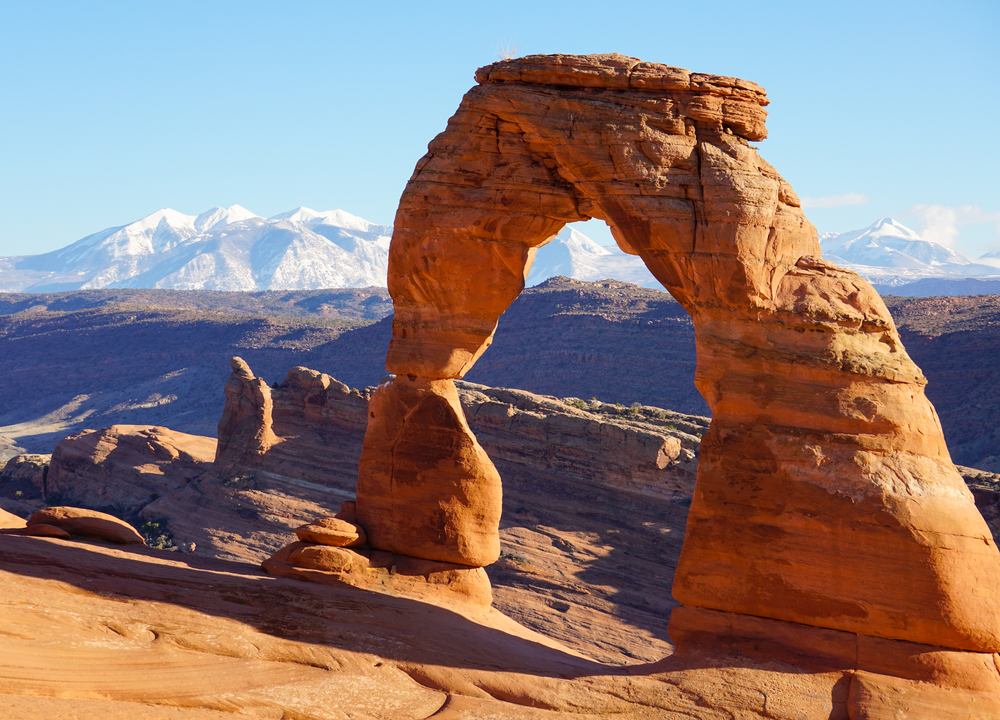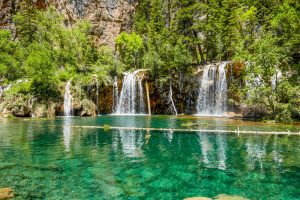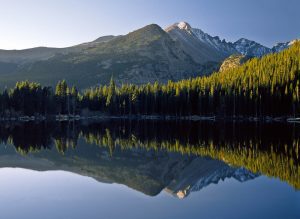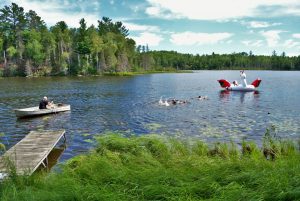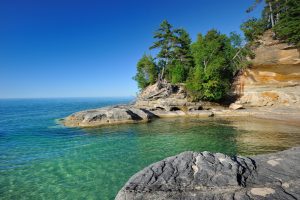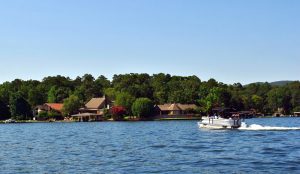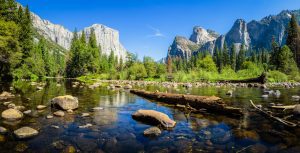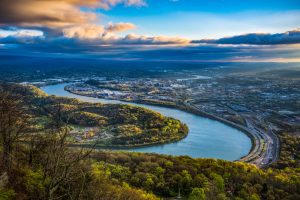The United States is the fourth largest country in the world with 2.43 billion acres of property. It’s no surprise that with all that land comes immense beauty. This country is filled with amazing sights, from pristine lakes and majestic mountains to lush forests winding rivers. All that wilderness means lots to explore, and today we will be focusing on the top 12 most beautiful arches in America.
Natural arches, also called land bridges, are rock formations that have had holes develop beneath them. This is most commonly caused by water erosion but can also be caused by weathering. Weathering is another form of erosion that is caused by harsh winds and rainstorms.
Many adventurers find themselves seeking out these natural arches for their beautiful scenic views. If you have the pull to do the same, check out our list to see which of them you want to visit first.
Table of Contents
1. Natural Bridge, Virginia
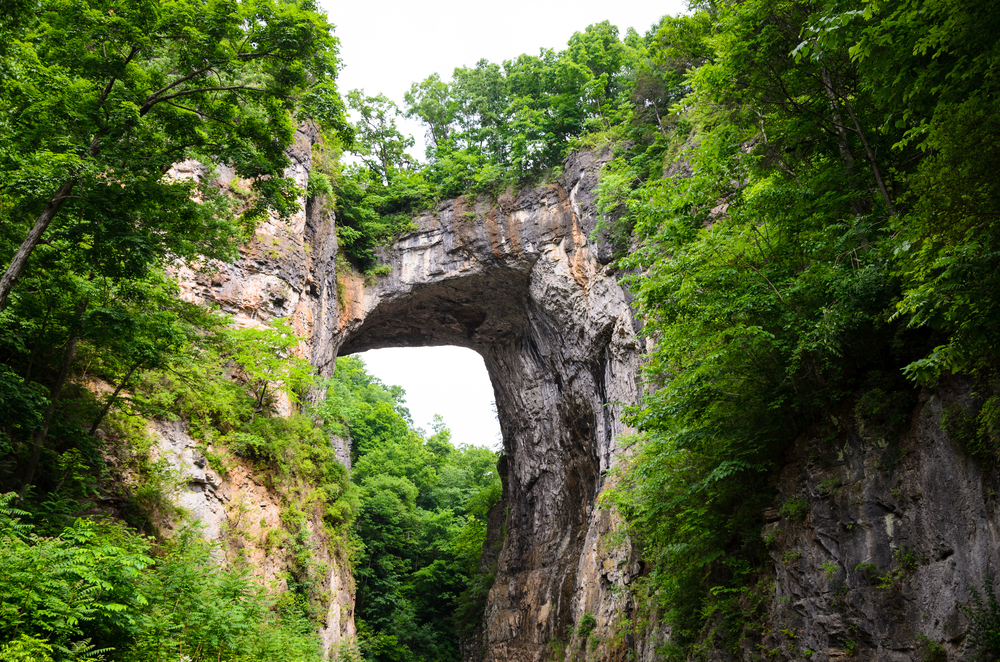
Natural Bridge State Park is located in Natural Bridge, Virginia. This historic bridge is 215 ft high and spans 90 feet between cliff walls. The cliff was formed by water erosion from Cedar Creek, which still flows beneath the bridge.
Visiting this natural bridge is rather easy and is even handicap accessible in some places, with paved paths leading to a viewing station and gift shop. Here, you can purchase tickets to get up close and personal by hiking below the bridge on a wooden boardwalk.
If you are a history buff, this bridge provides more than just beauty. Once called “The Bridge of Gods” by the Monacan Indians, they treated the site as if it was sacred.
The first to survey the land was George Washington in 1750, and it’s reported that while there he climbed part of the bridge and carved his initials into the rock. If you look closely enough, you can still see GW carved about 20 feet up one of the legs of the bridge.
This bridge and the land surrounding it were purchased from England by Thomas Jefferson in 1774 for only $2.40 in US dollars, which was twenty shillings then. He visited the area often but didn’t build a home on it until he became president.
This bridge is easy to access and is a great adventure for all ages. It is a rather quick experience and can work as a great rest stop on long drives if you don’t want to dedicate an entire day to exploring the surrounding area.
2. Natural Bridge, Kentucky
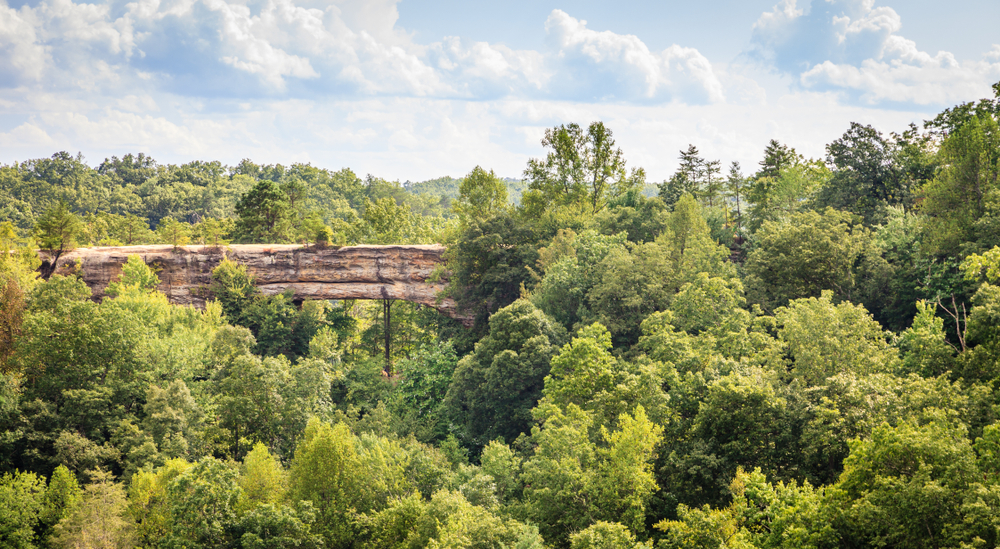
The largest natural bridge in Kentucky is in Natural Bridge State Resort Park. This bridge isn’t as large as the Virginia Bridge, but it is just as impressive, measuring 65 feet high and 78 feet across.
To get to the arch you pay to enter the park and then follow the signs. If you prefer to hike to the arch, there are two options you can take. The trail to the right takes you directly to the arch where you can see it up close and personal, even walking under and over it. The trail to the left takes you to an overlook where you can see great views and take panoramic pictures of the arch from a distance.
If hiking isn’t your thing, there is also a ski lift that will take you up the mountain to a viewing platform so you can view and photograph the arch from there. If you choose this option, keep in mind that the lifts only seat two and you will need to have an adult for each child in your party.
After you have seen the largest arch in the area, you can explore the rest of Red River Gorge, which has over 100 natural bridges and arches. Most of these are on the hiking and biking trails throughout the area and provide great photo opportunities for photographers and nature lovers.
Once you are done hiking, be sure to check out some of the other adventure opportunities in the area. Glass bottom kayaks and horseback riding are great choices, and several local restaurants will be ready to provide you with sustenance after your day of adventure.
3. City of Arches, Hawaii
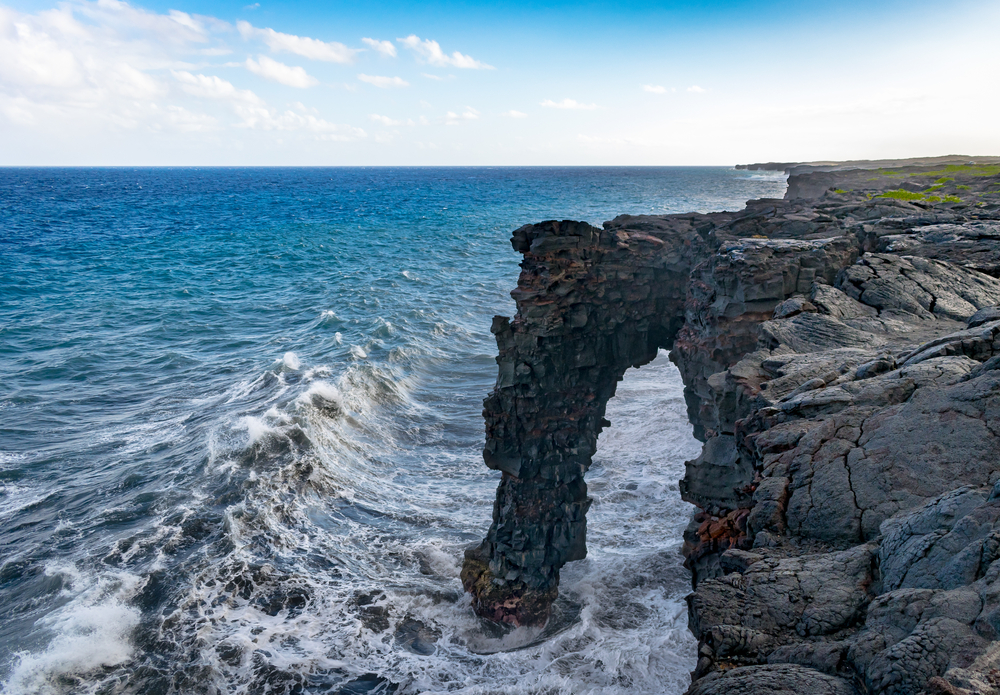
If surfside arches are more your thing, the lava rock arches and blowholes in Pu’uhonua o Honaunau National Historic Park is the perfect adventure spot! While there isn’t one single stand-out arch to view here, there are close to 2 miles of arches and blowholes to see and enjoy.
Blowholes are sea caves that have water shoved out of the top by the waves and the tide – like a whale’s blowhole. These caves can be very dangerous, so it’s important that if you choose to climb down and explore them, you do so during low tide when the water is calm. Otherwise, you could very easily be severely injured or even killed.
The arches and the caves along this coast have been carved out by the tides over millions of years, making this a captivating vacation destination for the sure-footed explorer. This adventure is probably not best for kids, so be sure to keep a close eye on them or leave them at home.
The weather here can get quite hot and it’s a decent hike along the cliffs, so be sure to bring water and dress appropriately.
4. Devil’s Bridge, Arizona
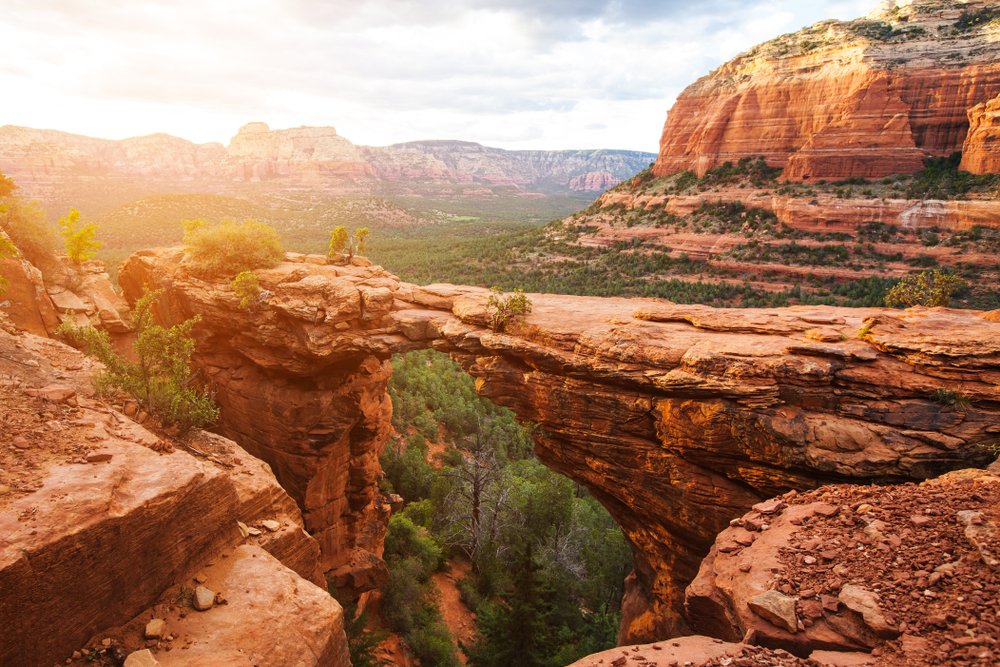
Devil’s Bridge in Sedona, Arizona is not for the faint of heart. This beautiful red rock bridge is located inside Coconino National Forest and is the largest natural bridge in the area at 54 feet high and 45 feet across.
While this hike is beautiful, it’s worth noting that it can also be dangerous. Two women have fallen either from the trail or the bridge and died, so if you aren’t sure-footed, this is not the hike for you.
If you think you have what it takes, the trail itself is less than 2 miles, though most people end up hiking close to 5. The extra distance is due to the large number of people visiting the bridge and the lack of parking. The designated parking for Devil’s Bridge fills up early and leaves people parking along the street, sometimes more than a mile from the trail.
If seclusion is what you are looking for, this isn’t the place, as it is heavily trafficked and there is usually a line at the bridge for photos. If you are patient though, it is well worth the wait to drink in the breathtaking views.
With its location in the desert, you can imagine that it gets very hot in the summer, so if that’s the only time you can visit, be sure to pack enough water and sunscreen. However, it’s recommended to avoid the heat and do the hike either in the spring or fall.
5. Rainbow Bridge, Utah
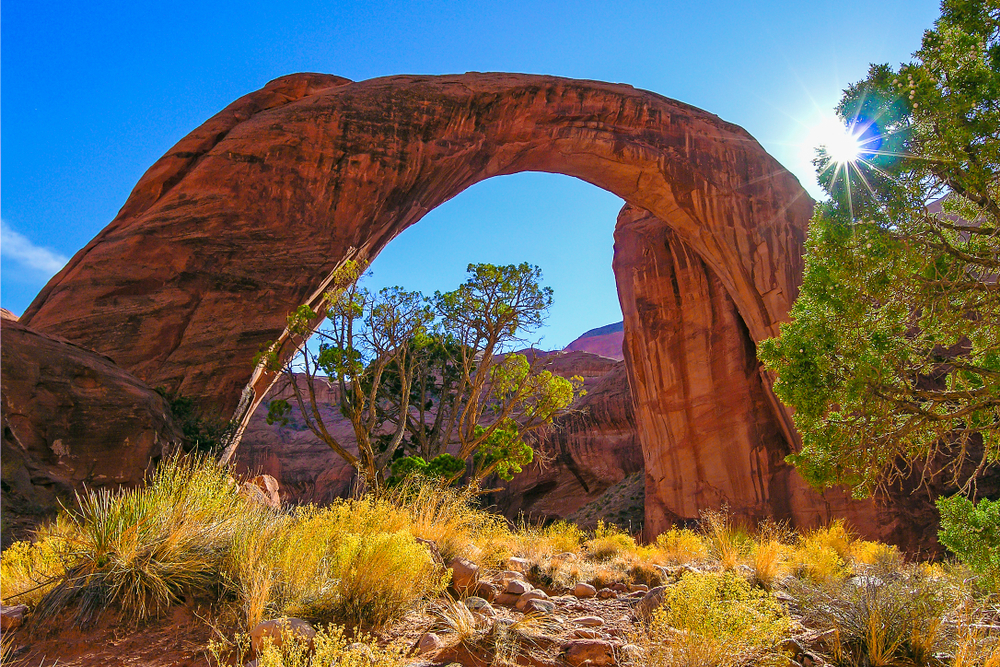
Utah’s Rainbow Bridge is the largest natural bridge in the United States and possibly even the world. This arch measures 290 feet tall and 275 feet across. This bridge is definitely one of the easiest and most accessible on this list, but that doesn’t mean it isn’t worth visiting for the serious adventurer.
The Rainbow Bridge is considered sacred to neighboring Native American tribes who still make offerings and pray here. Out of respect to these natives and their culture, it is asked that you stay on the trails and do not attempt to walk on or under the bridge as this is considered disrespectful and unlucky.
When you visit, you have three options for reaching the arch. You can drive into the park and hike the trail, which is usually around a mile, depending on water levels. This is the quickest and most direct route to the bridge.
The second option is to take a boat tour from Wahweap Marina. This tour is roughly 7 hours and crosses Lake Powell. If you want to take this route, be sure to call ahead and make sure the tour is available for your visit as water levels can affect availability.
The third and most strenuous option is to hike around Navajo Mountain. This hike takes approximately 2 days of backpacking and camping but will allow you to take in the beautiful sights surrounding the mountain and the Rainbow Bridge. You do need to be an experienced hiker to take this route as it is quite strenuous, and you will need to apply for a permit with the Navajo Nation to pass through their land.
You can visit the park year-round, and entry is free, but be sure to check for weather-related closures before driving to the park as flooding can sometimes lead to park closures.
6. Ear of the Wind Arch, Arizona
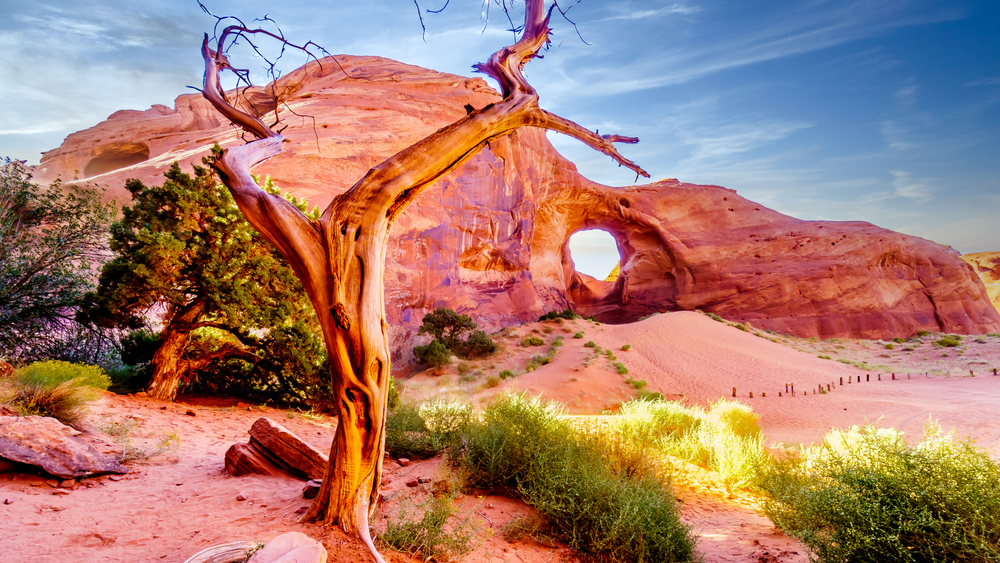
Ear of the Wind Arch is located in Monument Valley Navajo Tribal Park. The park was established in 1958 and has been home to the Navajos for over 400 years and to the Puebloans before that. Monument Valley has been a popular destination for photographers and Hollywood moviemakers alike for decades and it’s easy to see why.
This 91,696-acre park is full of beautiful views and unique rock formations. One of those formations is Ear of The Wind Arch. The exact size of the arch is not known, but it is very large and awe-inspiring. Named for its resemblance to an ear, this arch is only accessible if you have a Navajo tour guide to accompany you through the park.
There are several options for guided tours of different lengths while in the park. You do need to book these in advance, however, as they fill up very quickly and you aren’t permitted to visit the park without a tour guide with you.
7. Sipapu Natural Bridge, Utah
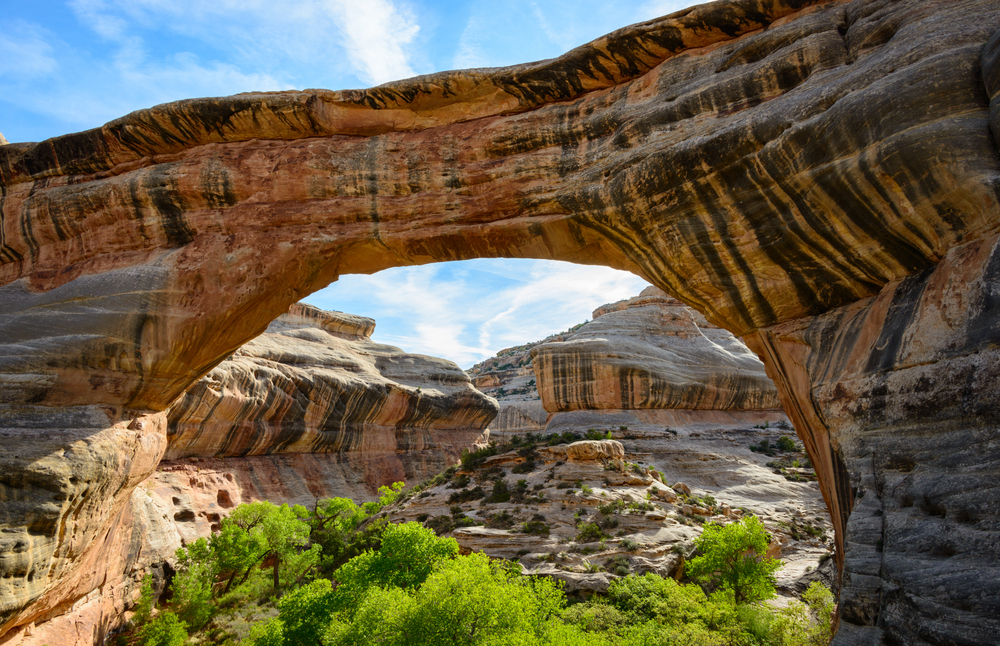
Sipapu Natural Bridge was once thought to be the fourth largest bridge in the world, but a survey in 2007 concluded the bridge was only 255 feet across and much lower on the list. What is exceptional about the bridge is that it is the longest bridge in the United States that has a trail that passes under it.
If you want to see Sipapu, it is visible from the street and the comfort of your car, but if you wish to get up close and personal the trail is quite short and relatively easy to navigate.
The natural bridge is located in Natural Bridges National Monument Park in San Juan County, Utah, where it passes over the White Canyon. While this bridge isn’t the largest, it certainly isn’t anything to scoff at. In Hopi, the word Sipapu means the opening between worlds, and you can certainly see how they may have thought this beautiful arch was an old portal.
8. Delicate Arch, Utah
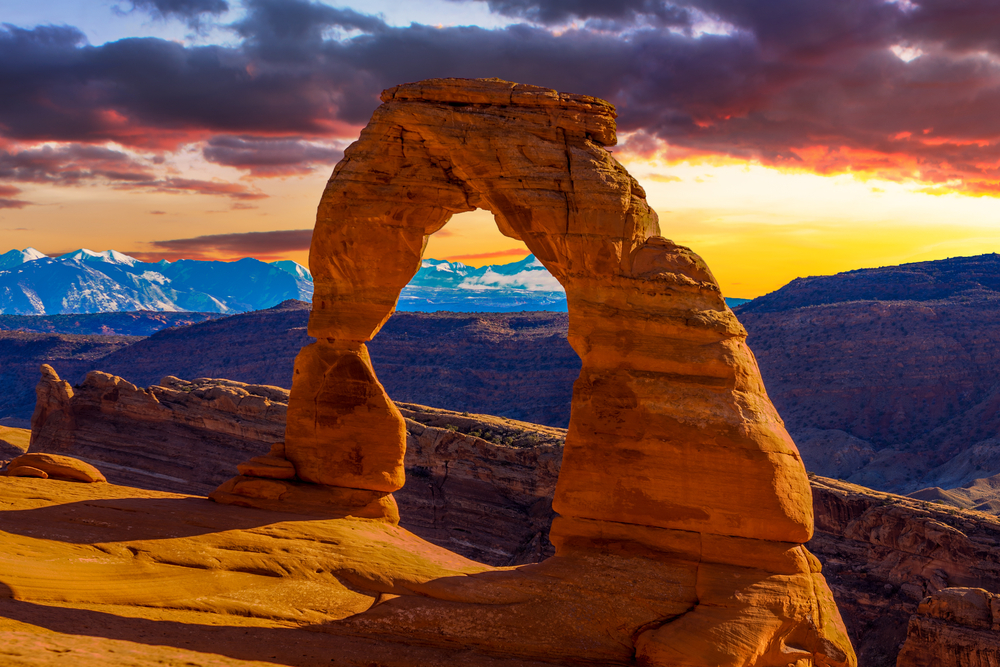
If you are looking for a more strenuous arch to hike to, Delicate Arch could be perfect for you. While this arch is seen as the symbol of Utah, it is harder to access. The trail to the arch is roughly 3 miles with 480 feet of elevation gain. Due to the elevation gain, it is considered to be a rather difficult hike and is best left to experienced hikers.
If you feel up to the challenge, Delicate Arch is located in Arches National Park near Moab, Utah. The hike to the arch starts at Wolfe Ranch Cabin where there is a large parking lot and signage to direct you.
As you hike, you will be wowed by the red rock and desert scenery around you. There is a second arch on the trail called the Twisted Donut, and many people stop here for photos. Be careful when hiking as there are several steep areas at the edge of the trail.
The best time for getting photos at Delicate Arch is sunset, but it’s also when the arch is the busiest, so keep that in mind when planning your visit. The park is open 24 hours a day year-round but be sure to check for closures before your visit as flooding can affect some trail closures during the monsoon season.
9. Arch Rock Valley of Fire, Nevada
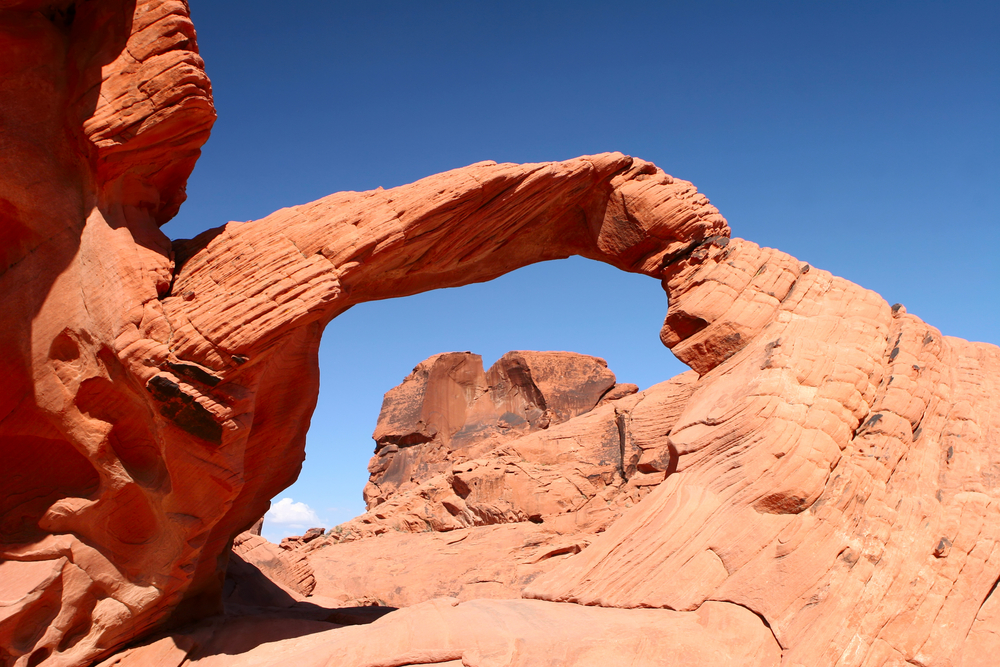
Unlike many of the arches and bridges on this list that were formed due to water erosion, Arch Rock in the Valley of Fire was formed by weathering. Weathering, as mentioned earlier, is a type of erosion that is caused by wind and rain.
The formation of the arch likely took millions of years, and eventually, the arch will be completely eroded away. No climbing on or around the arch is allowed as the formation is quite fragile, but you can hike close to the arch where you can get great pictures and enjoy the inspiring view.
The hike to the rock is about 2 miles and is a loop. It is considered relatively easy but be sure to pack plenty of water as temperatures can get quite high. While on the hike, you will also be able to visit and enjoy nearby Piano Rock.
10. Double Arch, Utah
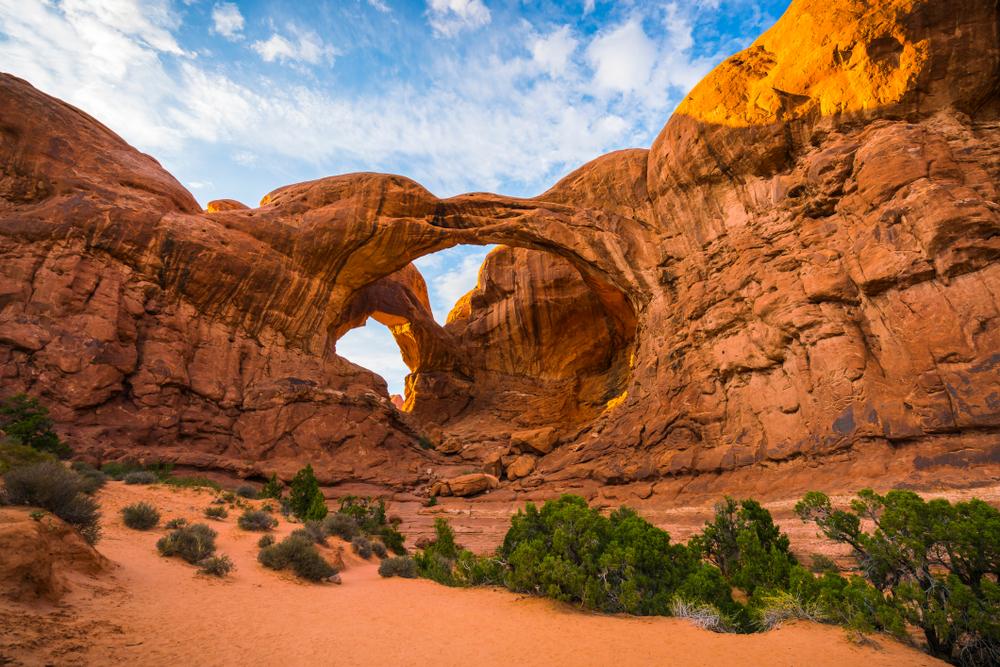
Another wonder of Arches National Park is the Double Arch. This unique formation consists of two arches that share the same outer leg foundation.
The Double Arch is a very popular site for photographers and online influencers who love the unique formation of the rock and the photographic opportunities it presents. Visitors arrive throughout the day to snap pictures and some even come at night to capture the magnificence of the stars through the Double Arch.
The Double Arch is in the Windows area of the park and is about 9 miles from the park entrance. The actual hike to the Arches is very short and will take you past several other popular arches, such as Turret Arch, Cove Arch, and Ribbon Arch.
It is possible to hire a guide to take you through Arches National Park and this is recommended for more inexperienced hikers or individuals who are interested in the history of the park as well as the stunning sights.
11. Elephant Rock Valley of Fire, Utah
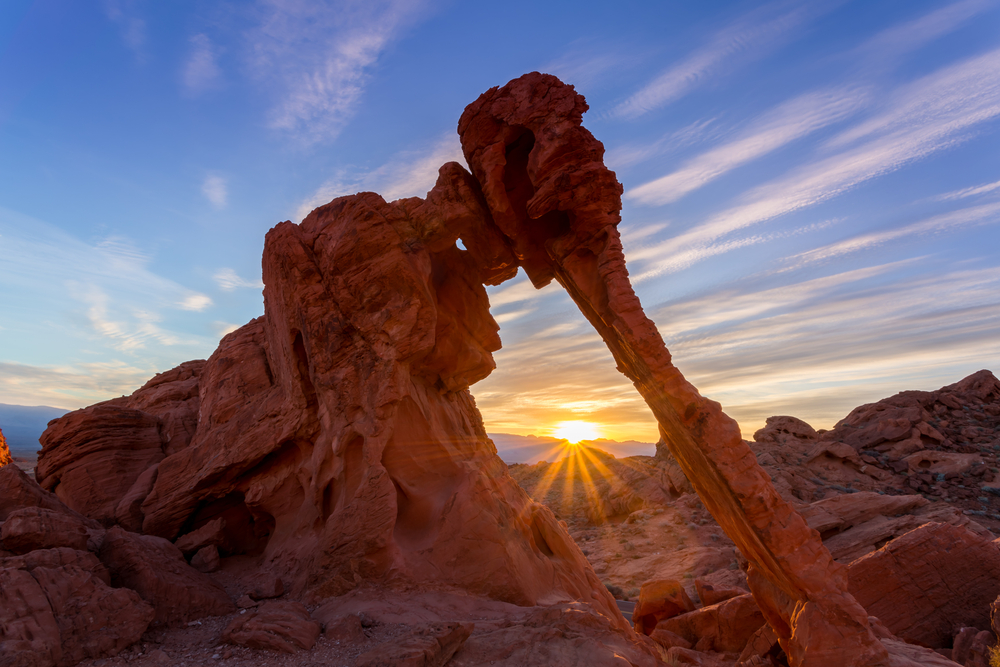
Elephant Rock in Valley of Fire State Park is unique for several reasons. Not only does the rock have an uncanny resemblance to pachyderms, but it also appears as if it is made out of several smaller rock pieces instead of one smooth arch.
The uniqueness of Elephant Rock brings lots of visitors to its base for photographs and to simply marvel at this incredible natural wonder. If you want to see Elephant Rock yourself, you have a few options.
Elephant Rock is visible from the highway before you enter the park, so if you just want to take a quick peek, you may be able to do so just by driving down the highway. This obviously isn’t the most recommended viewing method, but it’s worth mentioning for the time-crunched traveler.
If you wish to get a closer look, but don’t want to hike, you can pay and enter Valley of Fire State Park. You should be able to drive relatively close to Elephant Rock once in the park, but stopping on the road is prohibited, so if you can walk, the third option is really the best.
The best option is to park in the parking lot near the park’s east entrance. From here it is just a short .3-mile hike to Elephant Rock and the surrounding sights. They say you can’t believe Elephant Rock until you see it, so this arch is definitely one for your must-see list.
12. Natural Bridges State Beach, California
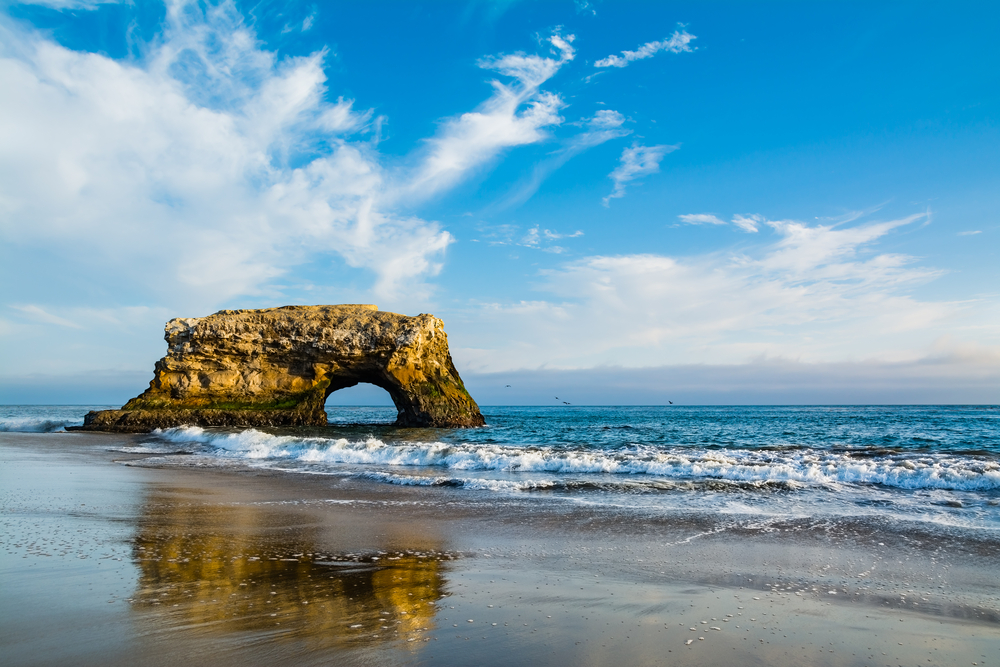
If deserts aren’t really your thing and a visit to Hawaii isn’t in your budget, Natural Bridges State Beach in California could be the perfect adventure for you. Located near Santa Cruz, CA, this park is full of ecological adventures.
The cliffs along the beach are home to numerous arches and bridges that have been cut through the stones by the relentless tides over thousands of years. A walk down this beach is sure to wow you with its free-standing and cliff-face arches and caves.
If rock formations aren’t your only interest, Natural Bridges State Park is also a great place to view shorebirds, otters, and even whales.
You can also catch a glimpse into unique tide pool ecosystems which are home to fish, anemones, crabs, and other critters. These animals are impressive because they live in tiny ecosystems that are completely at the mercy of the tide. When the tide comes in it brings food and when it goes out it takes away the stale water and leaves behind fresh.
These beaches and arches are easily accessible and can be fun for the whole family. You may even enjoy eating a picnic on the beach near an arch, but if you do, be sure to pack everything out with you when you leave.

